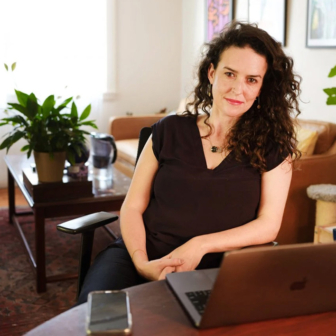To many, Productivity Commission reports epitomise the harsh, economically dry prescriptions that often prove unpalatable to governments. So here’s a surprise.
In its recent report on the National Disability Insurance Scheme, the commission’s laudatory superlatives just keep flowing. It describes the scheme as “a complex and highly valued national reform” that, if implemented well, “will substantially improve the wellbeing of people with disability and Australians more generally.” With the scale, pace and nature of the changes under the scheme “unprecedented in Australia,” the level of commitment to its success and sustainability among governments, people with disability and those working with them is “extraordinary.” The commission cites descriptions of the scheme as “ground-breaking” and a “once-in-many-generations reform.”
On one level, this is not surprising. It was the commission itself that came up with the model for the scheme that was largely implemented by the Gillard government and its successors. Its most recent report responds to a reference from treasurer Scott Morrison for a review of the scheme’s costs, including how to manage any cost overruns, and the scheme’s prospects for ultimate sustainability. Despite the open invitation to suggest savings and despite a series of problems in implementation, the commission continues to accentuate the positive.
But it also rings some warning bells. By June this year, twelve months after the start of the national rollout of the NDIS (though trials have been under way since 2013), 122,065 people had participated. Forty-three per cent of current participants (a small number had left the scheme by June) were under fifteen, compared to the 30 per cent figure assumed in the earlier modelling of full operation in 2019–20. Twenty-nine per cent of current participants (including those under fifteen) had autism as their primary disability; another 37 per cent had an intellectual disability. In short, two-thirds of scheme participants were in these two categories, far ahead of the other twelve categories listed under the NDIS.
Assuming current proportions are maintained and the NDIS scales up to the expected total of 475,000 participants, the current figure would equate to almost 138,000 people with autism, compared to a 2011 Productivity Commission estimate of about 75,000. In addition, almost 176,000 would have an intellectual disability, including those with developmental delay — a condition not included in the commission’s original modelling but added later by the Gillard government. The Productivity Commission report says that the term developmental delay, which the NDIS distinguishes from autism, applies to children who take longer to reach age-specific milestones than others. It is used in the absence of a diagnosed condition: that is, there is usually a specific condition causing the delay but this has yet to be formally identified, often because of the age and capabilities of the child.
The report includes the startling finding that 40 per cent of children who entered the scheme after being assessed with developmental delay had no identified deficits in functional capacity compared to the normal range for their age. “Children with mild or no deficits in the NDIS clearly runs counter to the objectives of the scheme and, depending on the volume of supports that these children receive, could have significant cost and equity implications,” it says. “As such a tighter gateway that better assesses eligibility is necessary.”
The National Disability Insurance Agency, which administers the NDIS, offers the explanation that children had entered the scheme on the basis of a medical diagnosis rather than an assessment of functional impairment. Given that a substantial reduction in functional capacity is supposed to be one of the requirements of NDIS funding, this suggests some serious teething problems, if not worse.
The report’s findings about unexpectedly high numbers of children with autism or intellectual disability entering the NDIS come as no surprise to some who work in the field. Speaking before its release, David Roberts, who has practised as a paediatrician for more than thirty years and is a former president of the Western Australian branch of the Australian Medical Association, told Inside Story: “A large number of children are being diagnosed with autism who don’t actually have it. Over the past ten years I have run across cases in the hundreds where the diagnosis has been made but the assessment has been conducted improperly and where there have been conflicts of interest in the diagnosticians.”
Roberts feels strongly enough to speak publicly about the issue because of a wider concern. “The introduction of Medicare was an absolute revolution in how Australian healthcare was delivered and it has been an outstanding success. The introduction of the NDIS has the potential to be a similar if not just as great a success. But it is going to go pear-shaped if we can’t stop the rorting. It is clearly unsustainable.”
Few others practising in the field are prepared to be as direct as Roberts, at least in public. Nevertheless, there is significant support for his view.
Peter Parry, a child psychiatrist and senior lecturer at the University of Queensland, has long argued that there is an “over-diagnosis epidemic” in autism. One of the issues, he tells Inside Story, is the trend towards medicalising differences, encouraged by the pharmaceutical industry and “the human desire for simple answers.” Another contributing factor is the resources available: for example, in Queensland, funding has been allocated to schools on the basis of the number of children in specific disability categories. The Queensland Education Department has reported rates of autism diagnosis as high as one in fifty students — three times Parry’s best estimate of the rate worldwide, which itself has seen at least a twenty-fold increase since the 1950s. A survey of psychiatrists and paediatricians in Queensland in 2005 found that, in the face of diagnostic uncertainty, 58 per cent had erred on the side of providing an autism diagnosis to enable access to educational funding. In New South Wales, the term “autism diagnostic factories” is used informally to refer to some specialist practices.
At the heart of the problem is the fact that diagnosing autism is subjective and imprecise. Autism is a type of developmental abnormality whose symptoms include difficulties in social interaction, and restricted and repetitive behaviours, activities and interests. It can’t be determined by a blood test or a scan, at least not solely. Rather, it is based on an assessment of behaviour and the child’s development.
A standard measure used in diagnosis is whether the child needs “substantial support” — a term open to wide interpretation. “Many children with normal development have one or two features that are autistic but don’t require substantial support, and as they mature, the traits fade away,” says Roberts. The problem, he argues, is that “people lower the bar on ‘substantial support’ to the point where they grant parents access to funding because it is in their own interests to do so.” The process is improper, he adds, “because the funding organisations, such as the federal government through the NDIS and Medicare, don’t make sure that the clinicians involved aren’t conflicted.”
The way the diagnostic process should work is that the child sees three health professionals with expertise in the field: a paediatrician, a clinical psychologist and a speech pathologist, who make independent assessments. If there is agreement on a diagnosis of autism, advisers funded by the federal government — “partners” under the NDIS — then direct parents to the right source of funding for the child’s treatment. And the diagnosticians, those who design the treatment program, and the therapists who deliver the services should all operate at arm’s length from each other.
In practice, argues Roberts, bodies such as the Autism Association of Western Australia, or AAWA, and other private-sector autism therapy providers have relationships with clinicians who conduct the diagnostic assessments. In short, they seek out clinicians who they think are most likely to diagnose autism, and thus facilitate access to the NDIS and Medicare funding packages. Moreover, the same people who provide the services to autism patients organise the diagnostic process and write a treatment program. “They dress it up as an interdisciplinary approach but all of these people inter-refer,” Roberts says. The treatment program should be tailored to the child’s specific needs, he adds, but is instead often based on the resources that providers have available.
This is not the only conflict. In Perth, the advisers who connect parents to funding, whether through Medicare, the NDIS or the state government program, work in the same building as the AAWA and often appear to work for it. The AAWA originally operated as a charity but now is a service provider in competition with other private organisations. When diagnosed, says Roberts, patients visiting the AAWA will typically be referred to advisers in the same building, who in turn send them back to the AAWA rather than to other companies. He adds that the WA Department of Communities has a similar arrangement, offering diagnostics to parents and then, through its allied health service, “capturing” the child for therapy services funded by the federal government. As a consultant paediatrician, Roberts is involved in diagnosis of autism but not in its treatment.
Mandy Mason, whose daughter has been a patient of Roberts, recalls taking her to see an autism adviser in Perth and being told that she could use her funding to “come next door to us” — a reference to the AAWA. She says the word “us” stuck in her mind because the advisers were supposed to be an independent source of information on available services.
It quickly becomes clear that many involved in this area see discretion as the better part of valour. After I submitted detailed questions to the National Disability Insurance Agency, it responded that it would be “inappropriate” to comment on an individual’s views — in other words, those of Roberts. The office of social services minister Christian Porter referred me to his department, which referred me back to the National Disability Insurance Agency. The AAWA did not respond to repeated requests, including in a detailed email, for comment.
A spokesperson for the National Disability Insurance Agency did acknowledge that “there is strong evidence which suggests the way health professionals diagnose autism varies considerably across Australia,” but added that this was being addressed. One expert familiar with the operations of the NDIS, who did not want to be identified, says professionals can come under “huge moral pressure from the family to give a diagnosis because that is the key to getting funding.”
The diagnostic uncertainties are highlighted in a draft national guideline for diagnosing autism released in September by the federal government–funded Cooperative Research Centre for Living with Autism. There is no consistent process for diagnosing autism, says the centre, and “this inconsistency has led to uneven service provision across the Australian states and territories, along with confusion within the community about the diagnostic process.” It points out that appraisal of behaviours “is an inherently subjective task that relies heavily on clinician experience and skill” and that the “gold standard” diagnosis is no more than a best-estimate clinical judgement. The guideline itself runs to seventy-two pages, not including references, and emphasises a tiered process, including different settings in which behaviours should be assessed and a focus on the degree of functional impairment.
The chief research officer at the Cooperative Research Centre, professor of autism research at the University of Western Australia Andrew Whitehouse, tells me that the guideline is being developed with the sole purpose of achieving a common approach and he is unsure what effect it will have on the number of children diagnosed. When I put David Roberts’s concerns to him, he says, “Are there children getting a diagnosis of autism because it might help provide support? Yes, I think there are. I attach no value judgement to that whatsoever.” He adds that this was where the NDIS eligibility criterion of the degree of functional impairment was important. As far back as 2011, a review commissioned by the federal government reported “concern that some autism advisers were also service providers, presenting a clear conflict of interest and therefore potential inability to offer unbiased advice or information to families.”
Whitehouse says that “any number of reasons” could help explain increased rates of autism, including more diagnoses of children with mild symptoms, more types of behaviour now meeting the criteria for diagnosis, a greater survival rate among children born prematurely — known to be associated with an increased risk of autism — and greater awareness of the condition, not only among clinicians but also among parents. “On the family side, if a child is developing differently, we start to think about autism now, whereas twenty to thirty years ago we didn’t.”
Overall, the commission found that utilisation of the NDIS was lower than expected but that this was largely because assistance that had been committed had yet to be taken up. But there were higher rates than expected for children and higher than expected costs for individual funding packages.
Canberra’s response to the higher rates has been the introduction of an Early Childhood Early Intervention program for children six years or younger, designed as a “gateway,” or perhaps more accurately as a hurdle, through which families are directed by therapists with experience in early childhood intervention to alternative mainstream services, as well as to the NDIS. It includes the specific aim that fewer than 50 per cent of those assessed should be given access to the NDIS. The Productivity Commission recommends this target be removed because it is incompatible with one of the key features of the NDIS: that it is open to anyone who meets the eligibility criteria.
While most working in the autism field are reluctant to question the high numbers entering the NDIS, Roberts’s view is different. He sees a threat to the very future of the scheme. The Productivity Commission and the government seem more sanguine, but the warning signs are clear. The commission says the NDIS came in under budget at the end of the trial period last year but this was because early cost pressures, such as the greater than expected number of children, were more than offset by lower than expected utilisation of the scheme overall. It says that the schedule for rolling out the full scheme is too ambitious and “poses risks to the financial sustainability of the scheme.”
The commission’s report spells out how costs have escalated since its initial modelling in 2011, when it estimated a total gross cost of $13.6 billion a year when the NDIS is fully operating. This figure has now increased to $22 billion, based on an estimate by the National Disability Insurance Agency, with the difference largely attributable to population increases and pay rises for social and community services employees since 2012. Moreover, the Department of Social Services has estimated a cost of $32 billion a year by 2029, with costs expected to increase above long-term inflation and population growth. But the commission also quotes estimates in 2011 by the Australian Government Actuary of offsetting costs of $11 billion reflecting savings in other government programs, and listed further indirect savings through better health, less crime and less need for supported accommodation.
Apart from Morrison’s asking the Productivity Commission to look at the scheme’s sustainability, there is little sign that the government is blanching at the escalating costs. The only significant response from Canberra to the commission’s report has been a statement from Christian Porter stating that the commission, “while identifying known issues and risks, had confirmed that the NDIS costs are on track.” As for emerging cost pressures, he argues that they “are being appropriately monitored and addressed.” The government will work with the National Disability Insurance Agency, the states and the territories to consider the report’s findings and recommendations, said Porter, but he rejected the idea of delaying the timetable for the full rollout.
The NDIS is worth fighting for. Though there have been frustrations, disappointments and teething problems, it is giving new hope and opportunity to tens of thousands of people whose struggles with disability had gone largely unrecognised. It gives them a measure of control over the services and facilities they need, replacing a system that the Productivity Commission called under-funded, unfair, fragmented, inefficient and unsustainable. Taking a lifetime approach based on insurance principles and with an emphasis on early intervention, it is an investment in the future, aimed at allowing more people with disability and their carers to lead fulfilling lives, including earning incomes. And while its cost is bracing, the commission, among others, argues that it will save money in the long run.
The ultimate justification for the NDIS is the telling comment made by the commission in its initial report in 2011: that “were government to be starting with a blank slate in determining its funding priorities, there would be a strong rationale for provision of disability services to be one of its highest spending priorities.”
The government has taken steps to tackle the risks that the scheme will be overwhelmed by those diagnosed with autism and developmental delays. The commission says it is too early to assess the success of these initiatives. If they are not adequate, the danger is that the government will take more brutal action that harms those most in need. ●




